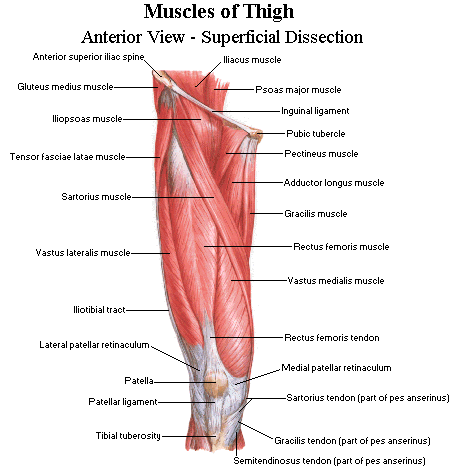 At your thigh muscles, sitting puts your thighs in a bent position, consequently the tensor fascia lata and the rectus femoris whose uses are to broaden the thigh are badly stretched and attenuated while your hamstring muscles with the function to bend your knee become tight and short because of asymmetry of muscle flexibility as found in the tilting board principle.
At your thigh muscles, sitting puts your thighs in a bent position, consequently the tensor fascia lata and the rectus femoris whose uses are to broaden the thigh are badly stretched and attenuated while your hamstring muscles with the function to bend your knee become tight and short because of asymmetry of muscle flexibility as found in the tilting board principle.Upon squatting or crouching, your sitting position is inflated with immoderate hip and thigh bending. For this reason, the tensor fascia lata and rectus femoris muscles become tighter and shorter at your hip and longer and extended at the thigh. Unrestrained shortening compression in bending (inflection) at your hip and unrestrained protraction compression in straightening (elongation) at your knee hurt both tensor fascia lata and rectus femoris muscles.
To sustain a person in a crouched posture or squatting posture, muscles in the back of you hip must go through an excessive lengthening compression as well an undue shortening contraction at your thigh. Because muscles under the hip that must go through a lengthening compression like the adductor magnus and gluteus maximus are big and powerful, the hamstring muscles that also performs a similar maneuver at your hip may now have denser power for flexing the thigh. The more powerful the twist of your hamstring muscles to aggressively bend your knee, the more flexibility the tensor fascia lata and rectus femoris muscles must wield to counterbalance this pressure.
For that reason, if you want to stand upright after squatting or crouching, the earliest weakness, pain or hurt will be experienced in the front part of your thigh and front part of your thigh giving rise to excessive thigh discomfort.

 Thigh pain after squatting or crouching is ordinary in people with tight thigh muscles. Many of us who are in sitting posture everyday have tight muscles in the both thighs. So if we do squatting or crouching movements whether performed in a prolonged way or continuously, you can feel impuissance, pain or discomfort in front of your thighs and also along the inner part of your thighs. It would tell you that your muscles in those areas were ill-treated by the scrunching up or squatting postures.
Thigh pain after squatting or crouching is ordinary in people with tight thigh muscles. Many of us who are in sitting posture everyday have tight muscles in the both thighs. So if we do squatting or crouching movements whether performed in a prolonged way or continuously, you can feel impuissance, pain or discomfort in front of your thighs and also along the inner part of your thighs. It would tell you that your muscles in those areas were ill-treated by the scrunching up or squatting postures.